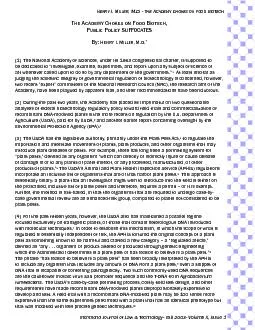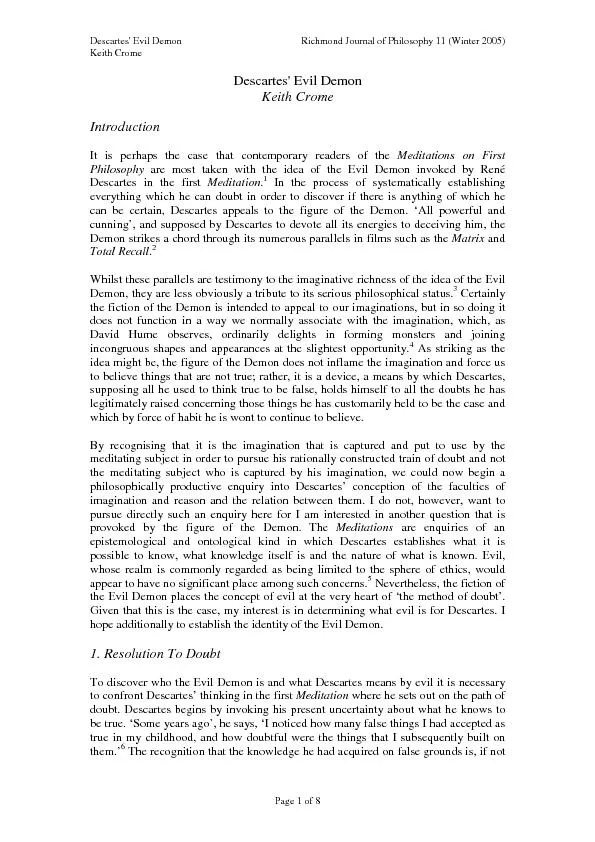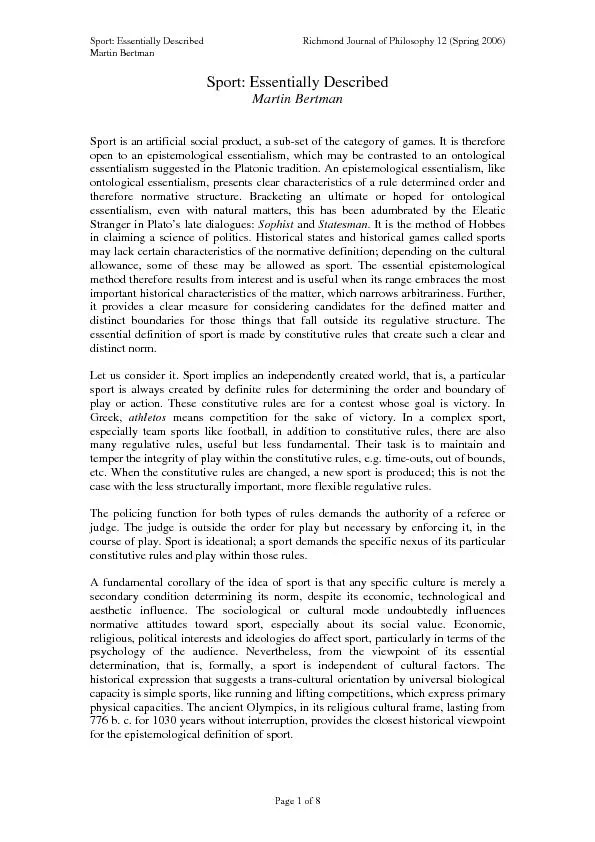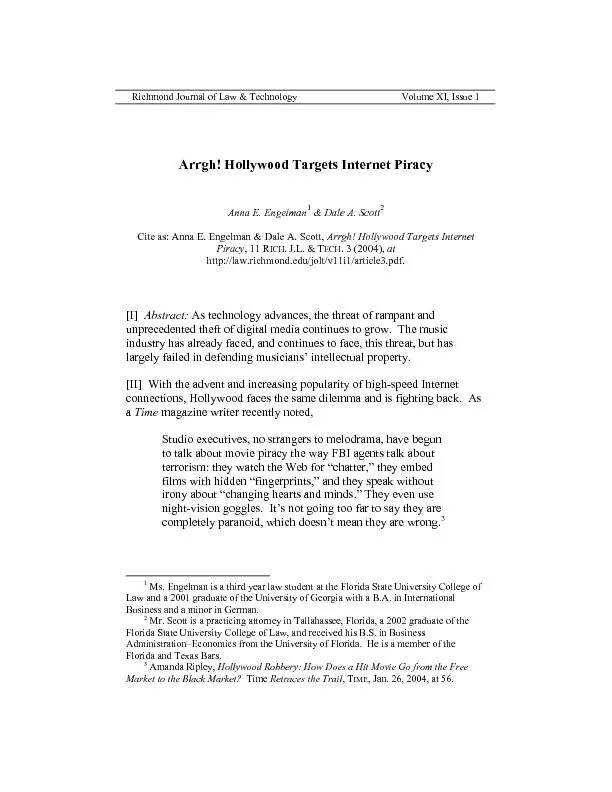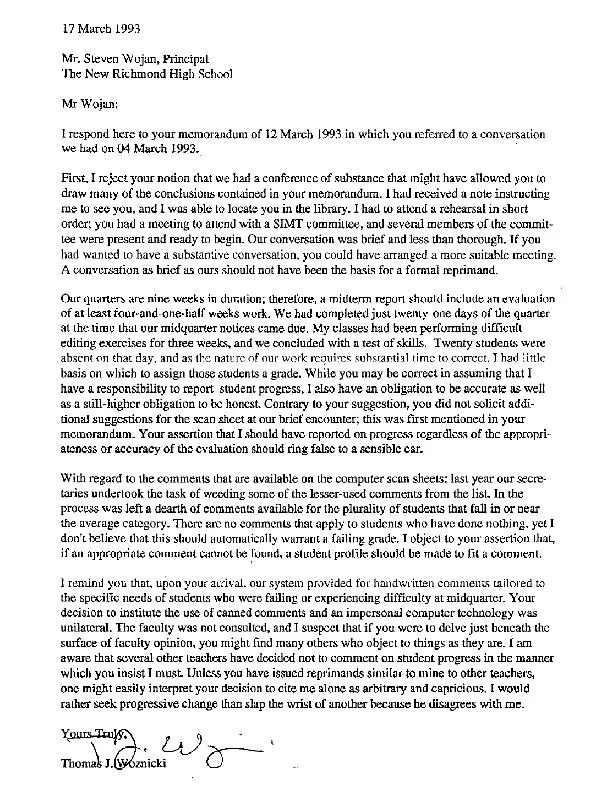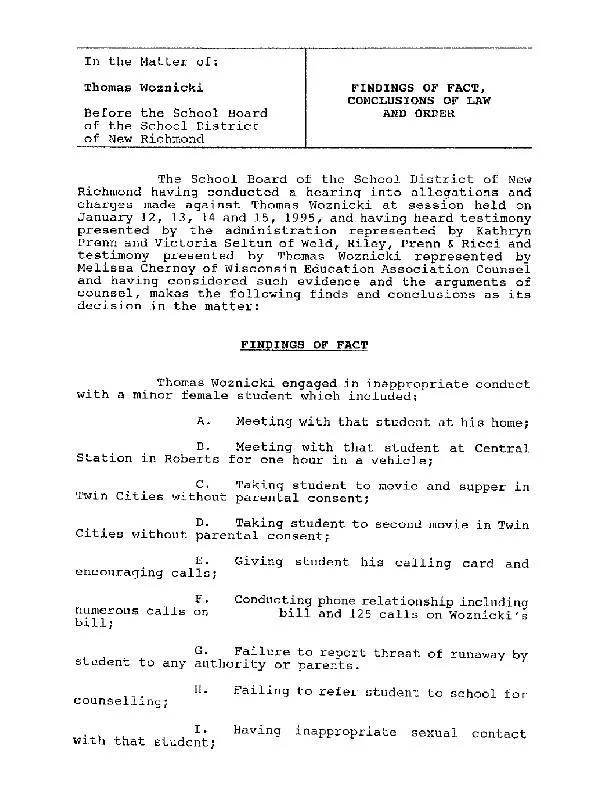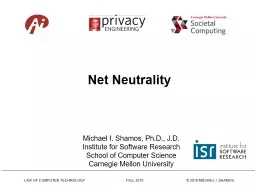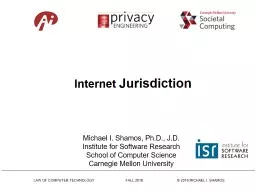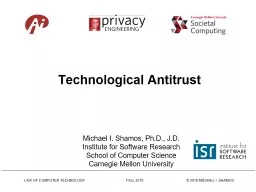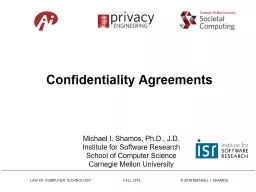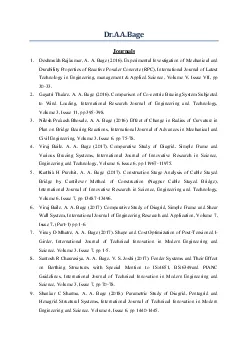PDF-Richmond Journal of Law & Technology- Fall 2003- Volume X, Issue 1 ...
Author : jane-oiler | Published Date : 2015-11-06
ENRY CADEMY IOTECH CADEMY IOTECH UFFOCATES By ENRY 1 The National Academy of Sciences under its 1863 congressional charter is supposed to be dedicated to x201Cinvestigate
Presentation Embed Code
Download Presentation
Download Presentation The PPT/PDF document "Richmond Journal of Law & Technology- Fa..." is the property of its rightful owner. Permission is granted to download and print the materials on this website for personal, non-commercial use only, and to display it on your personal computer provided you do not modify the materials and that you retain all copyright notices contained in the materials. By downloading content from our website, you accept the terms of this agreement.
Richmond Journal of Law & Technology- Fall 2003- Volume X, Issue 1 ...: Transcript
Download Rules Of Document
"Richmond Journal of Law & Technology- Fall 2003- Volume X, Issue 1
..."The content belongs to its owner. You may download and print it for personal use, without modification, and keep all copyright notices. By downloading, you agree to these terms.
Related Documents

